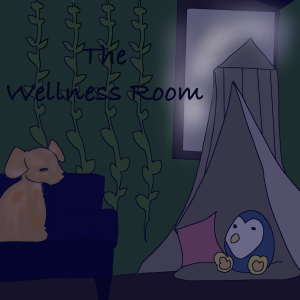The Problem With Modern Visual Effects: The Lord of the Rings Franchise

Lord of the Rings Poster. Photo credit: Warner Bros and New Line Cinema
April 1, 2022
On the evening of the Super Bowl, a big source of revenue for any broadcast corporation is advertising. On the night that millions tune in to see the old pigskin get thrown around on live television, a thirty second ad can cost over five million dollars. So when time-consuming advertisements such as movie trailers are on the table, they have to be able to gain interest to sell tickets, or in the modern age, sell subscriptions. Amazon had just that in mind, when at 6:30 PM, the lights of the stadium dimmed from millions of homes all around America, and a new trailer debuted for the next installment of the stunning Lord of the Rings saga. One that in a perfectly honest world should have ended with the Oscar-laden Return of the King, which is perhaps the greatest film of all time (according to my personal list). Sure, reboots make a ton of money, but sometimes the original source material is just so good that a reboot can do nothing but downgrade the original.
However, just because it’s a reboot doesn’t mean it’s definitely going to suck, it just means it’s likely to. There are great reboots like Blade Runner 2049 (2017), The Dark Knight (2008), Casino Royale (2006), and Mad Max: Fury Road (2015) to name a few, so it’s illogical to judge an upcoming project just on the fact that it’s a reboot of one of the greatest films of all time. However, the number of failures outnumbers the successes. The Mummy (2017), Fantastic Four (2015), Godzilla (1998), and Psycho (1998) are all examples of terrible films that are unnecessary attempts to make cash and don’t focus on telling a concise story.
That being said, there was one specific flaw that I noticed with the show when the trailer aired on that fateful night of the Super Bowl: the CGI.
Now don’t get me wrong, CGI is a great technique that filmmakers can use to demonstrate their vision without actually blowing something up or traveling to a fictional dimension. But when it’s overused, it can be quite detrimental and distracting from the rest of the movie. CGI can be used in small samples without looking fake, but when CGI is being used to create entire climates, environments, and even entire humans, it just looks over-the-top and fake. A great example of this is the orcs in The Lord of the Rings films and The Hobbit films, which were made a decade later and with an abundance of CGI.

As you can see, the Uruk Hai (created with makeup) looks so much better than Azog the Defiler (created with CGI). The Uruk Hai just looks more rooted in reality than Azog.
The fact that a trilogy of movies made over 20 years ago looks infinitely better than one made only nine years ago would be shocking to many, but there’s logic and fact behind it. The Lord of the Rings had the budget and time (about a decade of pre-production) to actually make Middle-Earth, or as close to actually making it as they could get without building actual kingdoms in New Zealand. Meanwhile, the Hobbit films were manufactured by the executives of Warner Bros and were stretched into a trilogy for money. The unnecessary number of Hobbit films (a trilogy of three hour movies from a three hundred page book) were made by Warner Bros for money rather than to tell a cohesive story, which hopefully isn’t what we will be saying about the new show in a few years time.
Now, I’ve only seen a reveal trailer for the show, but when watching said trailer I legitimately thought it was a new Lord of the Rings video game until they said ‘STREAMING IN SEPTEMBER,’ because the CGI seemed that far off.
Part of what makes Lord of the Rings great is how it’s all grounded in realism. I know that sounds ridiculous for a fantasy series, but every bit of scenery was either built in full or in miniature, and quite a lot of the scenery shots are real New Zealand landscapes (with the occasional addition of a lava-filled Morder in the background), rather than computer generated.

The scenery looks really cool and real, because it is real. Now, compare that to the footage we’ve seen from the new trailer:

Now, this bombardment of CGI begs the question: Why use CGI? It not only looks worse, but it’s also more expensive than actually building out an expansive set of practical effects like in Seven Samurai (1954).

The simple answer is money. Like I’ve stated in previous articles, filmmaking is an investment in the eyes of large corporations like Amazon, the studio producing the Rings of Power show, so the quicker they can churn out content the better. CGI may be more expensive, but it’s definitely faster.
Presently, we are in a streaming war. Each company has their own subscription service and are making their own original content in an attempt to get subscribers. Disney+ makes Marvel and Star Wars shows, HBO has Game of Thrones and now that that has ended, they’ve got Euphoria, and Netflix is basically their own studio now.
This has led to an increase in demand, so supply of any kind is welcome. As a result, companies are rushing to get as much content as they possibly can, so anybody interested in that new content has to subscribe to view it. The problem original content has is getting people interested in it, which is why franchises are absolutely key for streaming services. A fan of Star Wars is a lot more likely to watch the new Star Wars show than somebody who isn’t, it’s as simple as that. This has led to an increase in franchise reboots and now this bombardment has finally reached The Lord of the Rings.
IN ESSENCE, Lord of the Rings is simply one of those IP’s that needs to stay as it is… PERFECT! The Lord of the Rings films are near perfect films, and almost perfect adaptations of Tolkien’s novels (the big change being the endings being drastically different). Return of the King, the final film in the prestigious trilogy, won a record-tying number of Oscars, including Best Picture of 2004, Best Director, Best Visual Effects, Best Adapted Screenplay, Best Original Score, Best Costume Design, Best Sound Mixing, and Best Production design to name a few. These films were a massive gamble, with each film having a near 300 million dollar budget. It’s a miracle that they were made, and it would take a miracle to recreate even a fraction of the epic scope of these films. That grand scope is what made the Lord of the Rings films work, so it’s a little disheartening to see that the prequel is using so much CGI despite the fact that they are filming in New Zealand.
So I wish you the best of luck, Rings of Power. You’ll need it.














